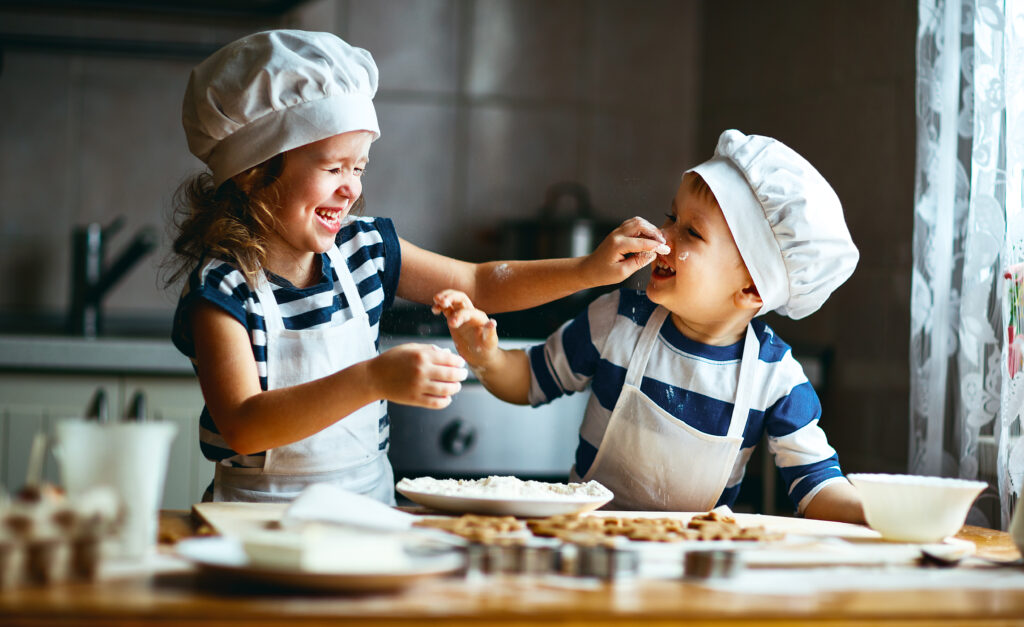December may be cold and wintery, but it affords us opportunities to celebrate and create holiday traditions with family and friends. Christmas, Hanukkah and Kwanzaa are all times when we share traditions and food with those we love. While Christmas and Kwanzaa occur on the same dates on the Gregorian calendar each year, Hanukkah does not. It is based on the Hebrew (lunar) calendar and can fall anywhere from late November to late December. This year all three holidays coincidentally share the fourth week of December. Thus, the opportunities to create lasting memories with your family are many!
Hanukkah
Hanukkah, also referred to as “The Festival of Lights”, means “dedication” in Hebrew. Hanukkah celebrates the victory of the Maccabees over the Syrian-Greek army and the rededication of the Holy Temple in Jerusalem during the second century B.C. When the Maccabees entered the Temple, they rekindled the eternal light upon the altar. But they only found enough oil to keep the flame burning for one day. As the story is told, the small vial of oil miraculously lasted the eight days it took to procure more oil. This is the reason that Hanukkah lasts eight days.
Fried foods are traditionally associated with Hanukkah as a reminder of the miracle of the oil. Two of the most popular of these are potato latkes (pancakes) and sufganiyot (jelly doughnuts). I grew up eating potato latkes. There was always a friendly rivalry between those who topped their latkes with sour cream and those who opted for an applesauce topping. These days, there are many latke variations, including zucchini and sweet potato. Since latkes are typically fried in hot oil, it’s best to have your little helpers assist with tasks such as peeling potatoes or forming the pancakes to protect them from possible oil splatters. Latkes also freeze well and can be reheated in the oven on a cookie sheet. Sufganiyot (Hebrew for doughnut) are round fried doughnuts. They do not have a doughnut hole, and are typically stuffed with jelly or custard, then sprinkled with powdered sugar. As is the case with many holidays, making and decorating cookies together is a fun way to create delicious memories. My grandson is already establishing himself as a culinary artist! To simplify things, purchase tubes of frosting in blue and white as an alternative to making them from scratch. Try this Hanukkah Cutouts recipe.
Christmas
Christmas commemorates the birth of Jesus Christ. It is primarily observed in the U.S. on December 25 as a religious and cultural celebration. I was raised in a Jewish home but have fond memories of going to my best friend’s house across the street to help decorate their Christmas tree. The Christmas tree was first used by German Lutherans in the 16th century. The tree, being an evergreen, represents eternal life. Many place a star at the top of the tree, symbolizing the Star of Bethlehem. When helping decorate my friend’s tree, we strung popcorn on string to create garlands. For a fun variation on this theme, consider an easy project making Ornament Popcorn Balls.
Baking and decorating cookies is always popular: use your favorite cut-out cookie recipe or for an easy shortcut try this Santa Claus Cookie. If you’re looking for an alternative to sweets, this easy-to-assemble String Cheese Snowman Caprese Salad Appetizer is fun to make and eat!
Kwanzaa
Kwanzaa, a celebration of African American culture, is observed from December 26 to January 1. Both the name and the celebration were created in 1966 by Maulana Karenga, a professor of African studies at California State University. Kwanzaa, based on African harvest traditions, was conceived to provide a sense of commitment and unity for African American families and to honor their African roots and heritage. There are seven principles of Kwanzaa: unity (umoja), self-determination (kujichagulia), collective work and responsibility (ujima), cooperative economics (ujamaa), purpose (nia), creativity (kuumba), and faith (imani). There are also seven symbols: the Mkeka (mat); Mazao (crops); Kikombe cha Umoja (unity cup); Muhindi (corn); Kinara (candelabra); Zawadi (gifts); and Mishumaa Saba (seven candles). The colors of Kwanzaa are green, black and red. Green symbolizes fertile land, black is for the color of the people and red symbolizes blood shed in the struggle for freedom.
Kwanzaa culminates with a feast called Karamu. Kwanzaa foods are influenced by African, Caribbean, South American and American Southern cuisine. Common foods include black-eyed peas, collard greens, rice dishes, yams, fried chicken, macaroni and cheese and gumbo. Children can help assemble a Black Bean and Rice Salad that also incorporates red and green peppers to honor the colors of Kwanzaa. And they’ll also enjoy making Kwanzaa Treats™ of Rice Krispies in Kwanzaa-inspired shapes and colors.
The holidays of the season afford many opportunities to celebrate with family and friends. By including children in the preparations, you will be creating memories that may last a lifetime.
Shelley Caplan is a DMV native. When she’s not in the kitchen or playing with her grandson, she can be found supporting live music at folk concerts in the area.
Potato Latkes
Servings: Approximately 12
- 2 lbs. russet potatoes, peeled and shredded
- 1 large onion
- 1 large egg, beaten
- 1 tsp. salt
- 1/4 tsp. pepper, grated
- oil for frying
Combine potatoes and onion. Using a clean kitchen towel, squeeze as much liquid out of this mixture as possible. Add egg, salt and pepper. Heat oil in a large frying pan using enough to cover the bottom of the pan. When hot, drop batter by tablespoons. Do not crowd pan. Fry until golden brown, about 3 minutes per side. Repeat with remaining batter, adding oil as necessary. Drain on paper towels. Serve topped with applesauce or sour cream as desired.

